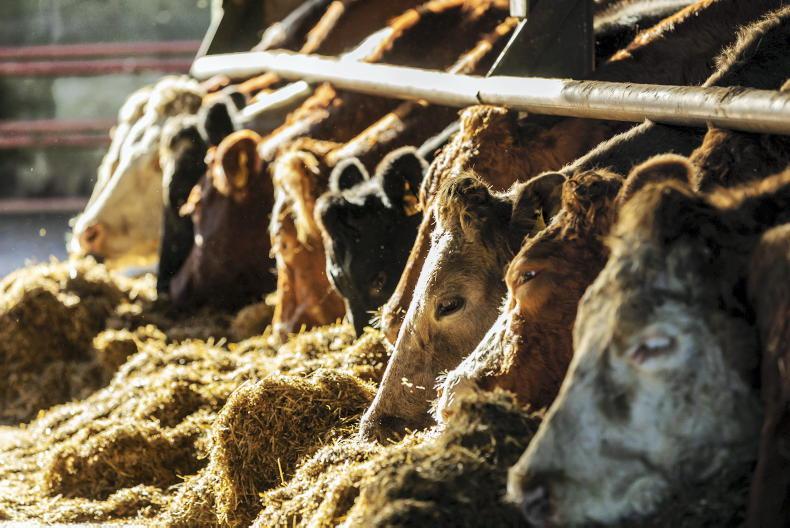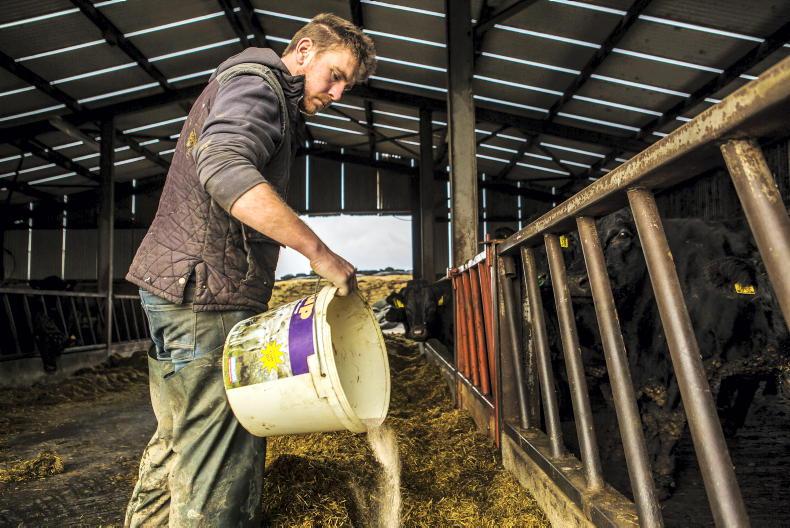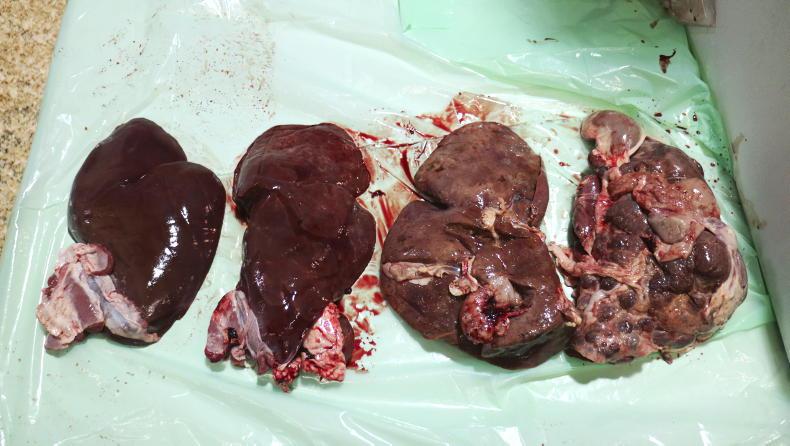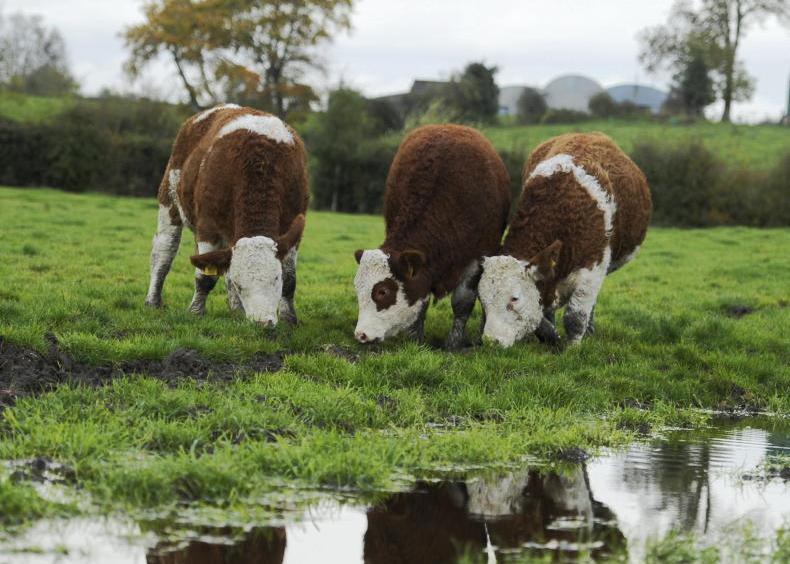Liver fluke infestation in sheep can be categorised into three types – acute, sub-acute and chronic.
The degree of risk posed by each disease type varies seasonally. Acute fluke has traditionally posed the greatest risk from August through to October.
This stage of the disease is best characterised by rapid ingestion of high numbers of immature fluke which burrow through the liver. This can lead to weakness of the animal, anaemia and sudden death.
There are often no characteristic symptoms, with well-fleshed animals with a high acute burden often collapsing and dying due to haemorrhaging of their liver.
As you progress through November, this generally transitions to sub-acute fluke disease being the greatest threat (still some early immature fluke present but growing numbers of immature and mature fluke).
Losses due to anaemia and sudden death are still possible, but as you get closer to Christmas and the new year, the risk switches to chronic liver fluke.
Chronic liver fluke is a result of prolonged intake of cysts and leads to the advanced loss of body condition.
Typical clinical signs include anaemia, weight loss and so-called bottle jaw (accumulation of fluid under the jaw) and, sometimes, diarrhoea or constipation.
There are six available flukicide actives at present – albendazole, closantel, nitroxynil, oxyclozanide, rafoxanide and trichlabendazole.
There are numerous combination products on the market which offer treatment for liver fluke and worms. These are frequently used, but should not be when there is no requirement to treat sheep for worms.
For example, mature ewes generally do not require any routine worm treatment. Therefore, advice on treatment options will focus on flukicide-only products.
This eliminates albendazole-based ingredients as there are only combination products on the market.
Trichlabendazole
Trichlabendazole products, of which there are five (Fasinex 5%, Fasifree 10%, Endofluke, Tribex and Triclaben), offer the most complete control, targeting early immature, immature and mature liver fluke.
The only aspect separating the products, according to the HPRA summary of product characteristics (SPC), is a day’s difference in the withdrawal.
Resistance to triclabendazole has been reported. Once resistance occurs, it is there for good with no findings discovered yet to suggest otherwise.
It should be noted that for trichlabendazole to work the molecule must be metabolised in a healthy liver. If the liver is damaged, then the product will not be able to work to maximum effect and may give an impression that there is a resistance issue.
It is important if you think you have a problem with resistance to talk with your vet and get a faecal egg count reduction test carried out.
This can be carried out strategically to find out if resistance is an issue or if problems were caused by damaged livers in the past without putting sheep at risk.
Closantel
Closantel offers the next best level of cover. It is traded as Flukiver in oral or injectable form and in recent years as Solantel.
The SPC lists Flukiver 5% w/v oral suspension possessing 86% efficacy against six-week-old fluke parasites.
A paper presented at the Teagasc hill sheep conference in 2016 by Dr Barbara Good listed an efficacy figure of 23% to 73% for Closantel-based products against early immature fluke aged three and a half to five weeks.
It also listed that an increased efficacy is achieved at the higher dose rate (10mg/kg) recommended for the oral formulation.
Where the injectable form is used it has a longer withdrawal of 77 days.
The SPC for Solantel says the product is effective against late immatures from five weeks. The efficacy figure is not listed so it is left similar to the Teagasc paper for closantel.
Rafoxanide
The two products with the flukicide Rafoxanide – Ridafluke and Ranide – were viewed as relatively recent or unknown products by many attending the mart events.
The SPC for Ridafluke lists up to 83% effectiveness against four-week-old immature fluke, with this dependent on the appropriate dose rate being administered.
The SPC for Ranide does not list any efficacy figures but licence holders Univet claim an efficacy ranging from 45% to 98% against four-week-old immature fluke and 85% to 99% against six-week old immature fluke.
Nitroxynil
The main Nitroxynil-based flukicide is Trodax. The product is potent, with veterinary advice highlighting the importance of treating animals to the correct weight guidelines.
Trodax is reported as being rapid to kill fluke parasites, with the Teagasc paper listing efficacy of 50% to 90% in immature fluke aged upwards of six weeks and 91% to 100% efficacy for fluke aged 10 to 12 weeks.
Oxyclozanide
There is one main oxyclozanide-based flukicide, Zanil, while many farmers at the demo were familiar with the combination product Levafasc Diamond.
Oxyclozanide is only effective against mature liver fluke, with the Teagasc paper listing efficacy of 50% to 70% against mature fluke parasites aged 10 to 11 weeks and 80% to 99% thereafter.
Although not licensed, oxyclozanide products will also treat for rumen fluke. Advice is clear on the requirement to treat animals. Routine treatment should not take place and animals should only be treated where there are clinical signs of disease.
The presence of rumen fluke eggs in healthy animals does not necessitate dosing with the recommendation to seek advice from your vet, who can take into account farm specific factors.
Strategic treatment
The interval between treatments depends on land type and previous history on the farm. The general recommendation where the risk of fluke is seen as moderate is to treat outwintered sheep in November, January and April.
Where there is a higher risk, the treatment interval is reduced to six to eight weeks, while in the highest-risk situations it may be necessary to reduce this interval even further but the advice in these circumstances is to prioritise grazing on drier lands and limit grazing on heavily infested areas.
There is a lower risk of liver fluke where grazing peat hills but it is important to take account of periods where sheep are grazing on in-bye or lowland areas.
The advice is alternate between products with questions arising at the demos as to the optimum frequency to change.
There is no hard and fast rule and opportunities should be capitalised upon to use products strategically. For example, where sheep have been housed for eight to nine weeks then it delivers an opportunity for a product to be used that targets late immature and mature parasites.











SHARING OPTIONS